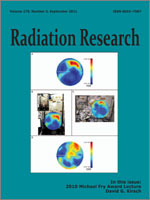The laboratory mouse has been used for many decades as a model system for radiation research. Recent advances in genetic engineering now allow scientists to delete genes in specific cell types at different stages of development. The ability to manipulate genes in the mouse with spatial and temporal control opens new opportunities to investigate the role of genes in regulating the response of normal tissues and tumors to radiation. Currently, we are using the Cre-loxP system to delete genes, such as p53, in a cell-type specific manner in mice to study mechanisms of acute radiation injury and late effects of radiation. Our results demonstrate that p53 is required in the gastrointestinal (GI) epithelium to prevent radiation-induced GI syndrome and in endothelial and/or hematopoietic cells to prevent late effects of radiation. We have also used these genetic tools to generate primary tumors in mice to study tumor response to radiation therapy. These advances in genetic engineering provide a powerful model system to dissect both the mechanisms of normal tissue injury after irradiation and the mechanisms by which radiation cures cancer.
How to translate text using browser tools
1 September 2011
Using Genetically Engineered Mice for Radiation Research
David G. Kirsch
ACCESS THE FULL ARTICLE

Radiation Research
Vol. 176 • No. 3
September 2011
Vol. 176 • No. 3
September 2011




